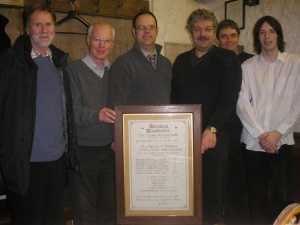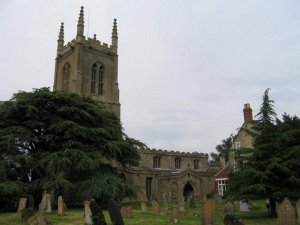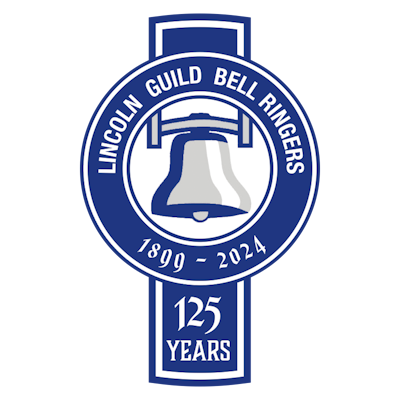100 years of Spliced Minor Ringing | |
Tuesday 15th February 2011 marked an historic occasion in the history of ringing, the centenary of the first true peal of Spliced Minor to be rung. This peal was rung by a resident band of ringers from the Lincoln Diocesan Guild, at St Michael�s Church Edenham in Lincolnshire, and consisted of fourteen methods rung in seven true and complete 720s. There is a very interesting story behind the 1911 peal at Edenham which is recorded in Denis Frith�s book Ring in the True, The history of the first hundred years of the Lincoln Diocesan Guild. "In the middle of the 1800s James Platt of Yorkshire had investigated the splicing of Minor methods but it seems that his work had largely been forgotten and the commonly accepted way to get more than seven Minor methods in a standard length peal was to ring fourteen 360s, or even more methods in 240s, with rounds coming up at every change of method. Though frowned upon, this had been accomplished in Yorkshire, Norfolk, Cheshire and Essex. Towards the end of the 1800s the Rev E Bankes James, brother of the Rev H Law James who was the Master of the Lincoln Diocesan Guild, began to look into the question of true method splicing again, but it was certainly the Rev H Law James who was the first to put it into practice. On the evening of Tuesday 14th February 1911 three ringers from Bourne and two from Surfleet met the Edenham tower captain to attempt a peal of Spliced Minor in fourteen methods. In the final lead, Double Bob, the treble and second ringers attempted to dodge in 5/6 and started to come down the wrong way from the back. Although this was spotted and immediately corrected the conductor, the Rev H Law James, ruled that as this was a landmark in the history of ringing, it should not be allowed to stand. Arthur Holmes, tower captain at Edenham offered his bells again for the following night and so that there should be no blame, insisted on ringing the treble himself; he had rung the fifth the previous night. This time there were no trips, but it is interesting to note that they rang the Double Bob at the start of the seventh extent, instead of the end, and finished by ringing Plain Bob! So on Wednesday 15th February 1911, the first ever true peal of Spliced Minor in 14 methods was rung and a tradition of ringing Spliced Minor was established which survives to this day." Rev H Law James was obviously very proud of the achievement and he wrote in his Master�s Report in the Lincoln Diocesan Guild 1911 Annual Report, "The greatest feature of the year�s progress is undoubtedly in Minor with the ringing of fourteen methods in seven 720s at Edenham, the first time that this has been achieved, a record which will not be easily beaten, it was a far greater mental effort than any peal of Major rung throughout in one method." At the start of this year I set about organising the centenary peal as I felt this historic peal should be commemorated and was anxious it did not go by unmarked. The main aim was to ring the peal on the same bells, the back six at Edenham, (however since 1911 the tenor has been recast and is some 3 cwt heavier than its predecessor), in the same methods, to the same compositions, with an all resident Lincoln Diocesan Guild band. After a bit of research I found the original compositions published in the 1911 Lincoln Diocesan Guild Annual Report. I did however choose the easy option of calling it from the tenor unlike Rev H Law James who called it from the second! The peal was scored in fine fashion, (I am sure the 1911 peal band would have approved), the ringing was very good with very few trips. We rang with open handstroke leads something which Rev H Law James insisted upon. In his 1905 & 1910 Master�s Reports he writes "Let me say again, as I have said before, Lincolnshire striking is poor ... The striking in the southern portion of the county is steadily improving, owing to wider leading, and I hope that North Lincolnshire will follow suit, as ringing without open leads is not fit to listen to ..." I am pleased to say we did not have any cross over�s in the Double Bob as none of us wanted to repeat history and have to go back the following night to attempt the peal again. However the treble ringer jokingly did offer to dodge with the second at the back!!! We all agreed afterwards what an achievement this peal must have been back in 1911 and also how far spliced ringing has progressed over the past 100 years. Nowadays we think nothing of ringing 41 Spliced Surprise Minor to peals and the peal columns in the Ringing World and Campanophile regularly feature peals of Spliced/Multi Minor. This tradition of spliced ringing started back at Edenham 100 years ago and survives to this day; it is the legacy of the six men who rang in the 1911 peal and the composer! | |
Christopher C P Woodcock | |
|
Lincoln Diocesan Guild
Lincoln Diocesan Guild | |
 |
 |
with the 1911 peal board at Edenham, L-R: Graham Colborne 1, Jim Benner 2, Mark Mumby 3, Ian Dawson 4, Barry Jones 5, Chris Woodcock 6. |
Lincolnshire, (10 bells, 15-3-25 in F) |
